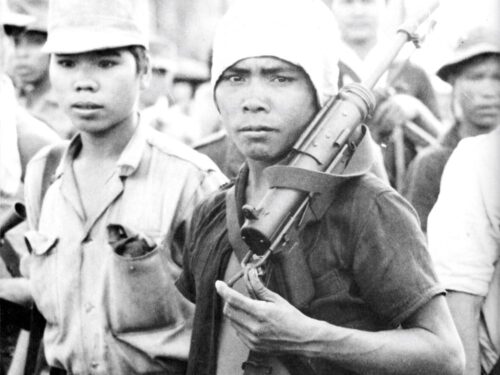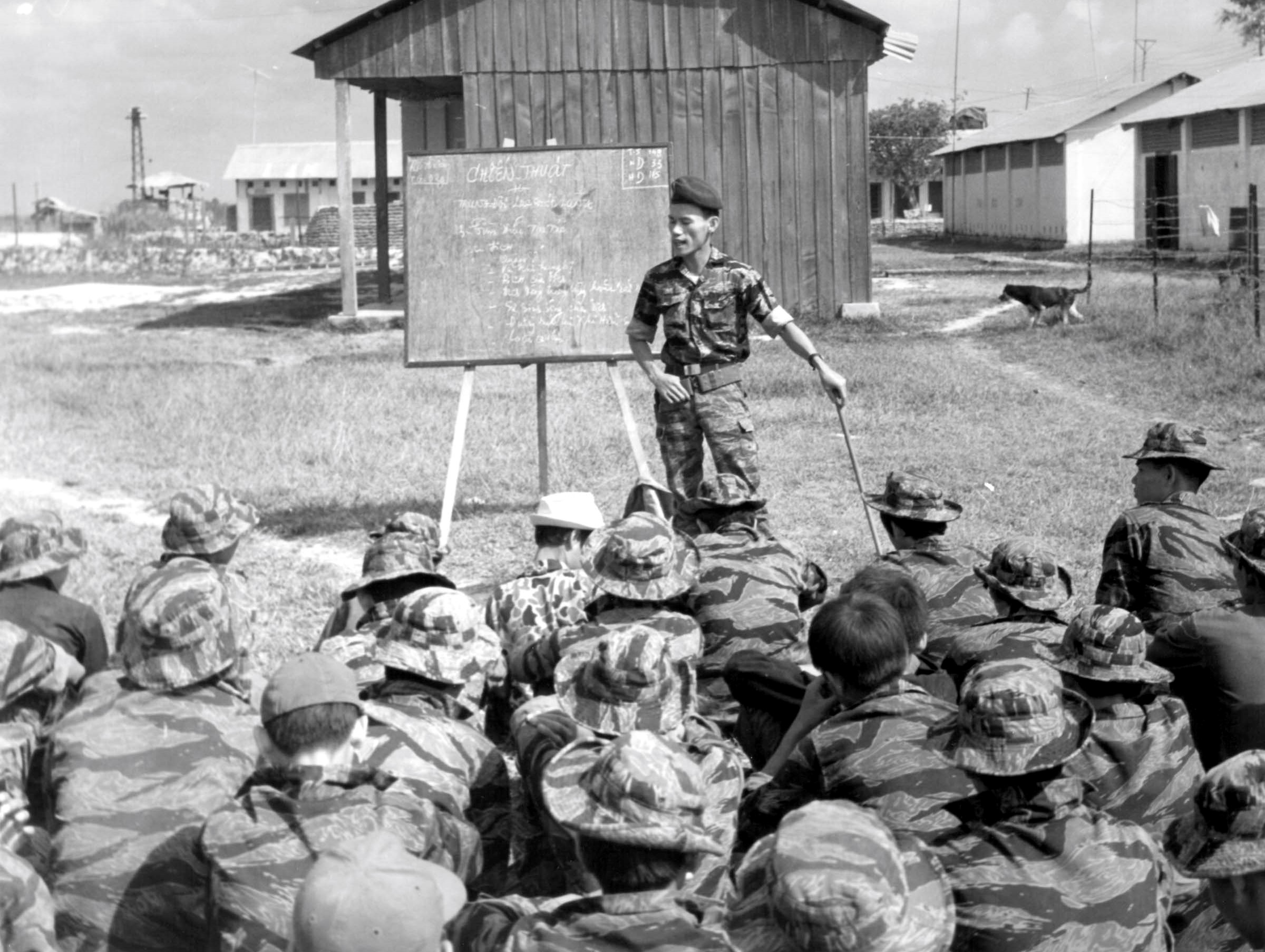The Civilian Irregular Defense Group (CIDG) was a covert paramilitary initiative launched by the Central Intelligence Agency (CIA) in 1961 during the early stages of the Vietnam War. Its primary objective was to counter the growing influence of the Viet Cong (VC) in South Vietnam’s Central Highlands by organizing, training, and arming indigenous ethnic minorities to defend their villages and conduct irregular warfare.
The program was born out of U.S. concerns that the South Vietnamese government was failing to secure remote regions, particularly those inhabited by the Montagnards, tribal groups historically marginalized by both North and South Vietnamese regimes. The CIA feared that these populations were vulnerable to VC recruitment and sought to preempt this by fostering loyalty through military and civic engagement.
The Buon Enao Experiment
The CIDG program’s pilot effort began in the village of Buon Enao in Darlac Province, home to the Rhade tribe. This initiative, known as the “Buon Enao Experiment,” was a collaboration between CIA operatives and U.S. Army Special Forces (Green Berets), who operated under the CIA’s cover organization, the Combined Studies Division (CSD).
Special Forces teams established Area Development Centers and began training villagers in basic defense tactics and small arms use. The strategy was twofold: create local defense units to protect villages and form mobile strike forces, later known as MIKE Forces, for rapid response to VC attacks. The success of Buon Enao became a model for expansion across the Central Highlands.
Expansion and Operational Shift
Initially focused on village self-defense and civic action, the CIDG program rapidly expanded. By 1963, the U.S. Military Assistance Command, Vietnam (MACV) assumed control from the CIA in a transition known as Operation SWITCHBACK3. This marked a shift in the program’s mission—from localized defense to broader counterinsurgency and border surveillance operations.
Under MACV, the CIDG camps multiplied, and the program became more militarized. The 5th Special Forces Group (Airborne) was deployed to manage the growing network of camps and personnel. CIDG units began participating in conventional military operations, including raids, reconnaissance, and intelligence gathering along the Laotian and Cambodian borders.
Composition and Training
CIDG forces were primarily composed of ethnic minorities, including the Montagnards, Nung, Khmer Krom, and others. These groups were often more receptive to American advisors than to the South Vietnamese government, which had historically discriminated against them.
Training was conducted by U.S. Special Forces A-Teams, who lived among the villagers and built strong relationships through cultural immersion and mutual respect. The training regimen included weapons handling, small-unit tactics, jungle warfare, and civic action projects such as building schools and clinics. This dual approach aimed to win hearts and minds while preparing communities for armed resistance.

MIKE Forces and Tactical Innovation
One of the most notable innovations of the CIDG program was the creation of MIKE Forces, elite mobile strike units composed of CIDG personnel and led by U.S. Special Forces. These units were designed to respond quickly to VC threats, reinforce vulnerable camps, and conduct offensive operations.
MIKE Forces were highly effective due to their mobility, local knowledge, and unconventional tactics. They played a crucial role in several key battles, including the defense of camps at Hiep Hoa, Nam Dong, and Kham Duc. Their success demonstrated the viability of irregular warfare in counterinsurgency contexts.
Integration and Decline
By 1967, the U.S. began integrating CIDG personnel into the Army of the Republic of Vietnam (ARVN) and other government agencies to increase Vietnamese ownership of the program. This transition was part of a broader strategy to “Vietnamize” the war effort and reduce American involvement.
The integration process was uneven. While some CIDG units successfully transitioned into ARVN Ranger battalions, others struggled with cultural and political tensions. The Montagnards, in particular, faced challenges due to their historical alienation from the Vietnamese state. Despite these difficulties, the CIDG program continued to operate until its formal dissolution in 1970, when remaining camps were converted into ARVN Ranger camps3.
Legacy
The CIDG program left a complex legacy. On one hand, it demonstrated the effectiveness of combining military training with civic action to build local resistance against insurgents. It also provided ethnic minorities with unprecedented access to citizenship, education, and healthcare through their participation in the program.
On the other hand, the program’s abrupt integration and eventual abandonment led to disillusionment among many Montagnards, some of whom later faced persecution. The CIDG experience highlighted both the potential and pitfalls of using irregular forces in counterinsurgency, offering lessons that continue to inform modern military doctrine.
Final Thoughts
The CIDG program stands as a compelling chapter in the history of unconventional warfare. Born from the CIA’s strategic vision and executed through the expertise of U.S. Special Forces; it empowered marginalized communities to resist insurgent threats while reshaping the dynamics of counterinsurgency in Vietnam. Though its legacy is mixed, marked by both tactical success and political fallout, the CIDG initiative demonstrated the power of local engagement, cultural understanding, and adaptive military strategy. In the broader context of the Vietnam War, CIDG was more than a military experiment; it was a bold attempt to bridge divides and build resilience from the ground up.
